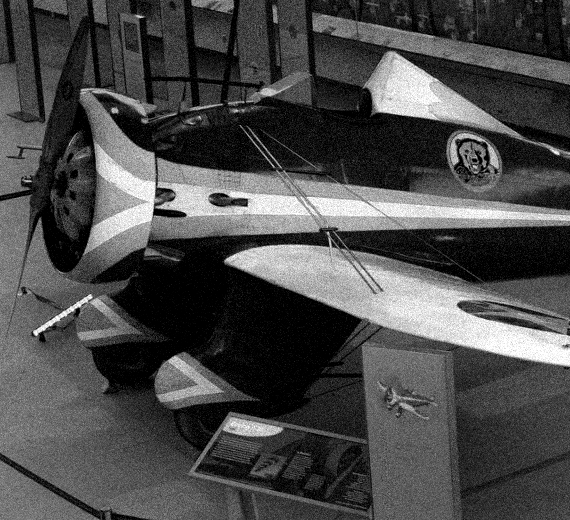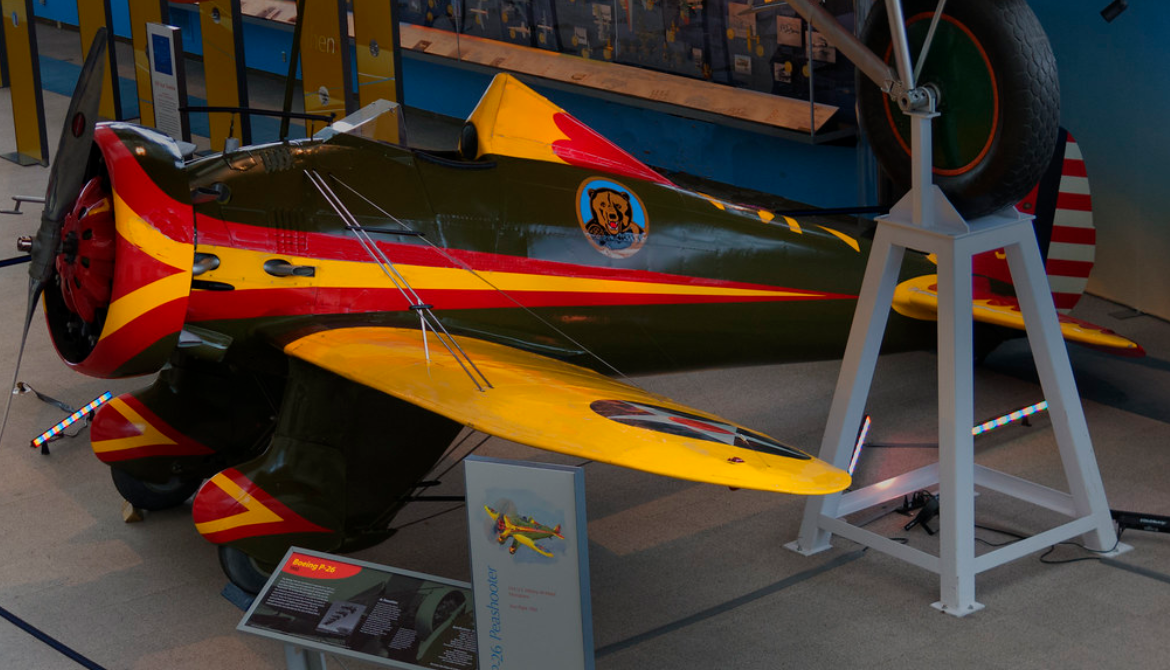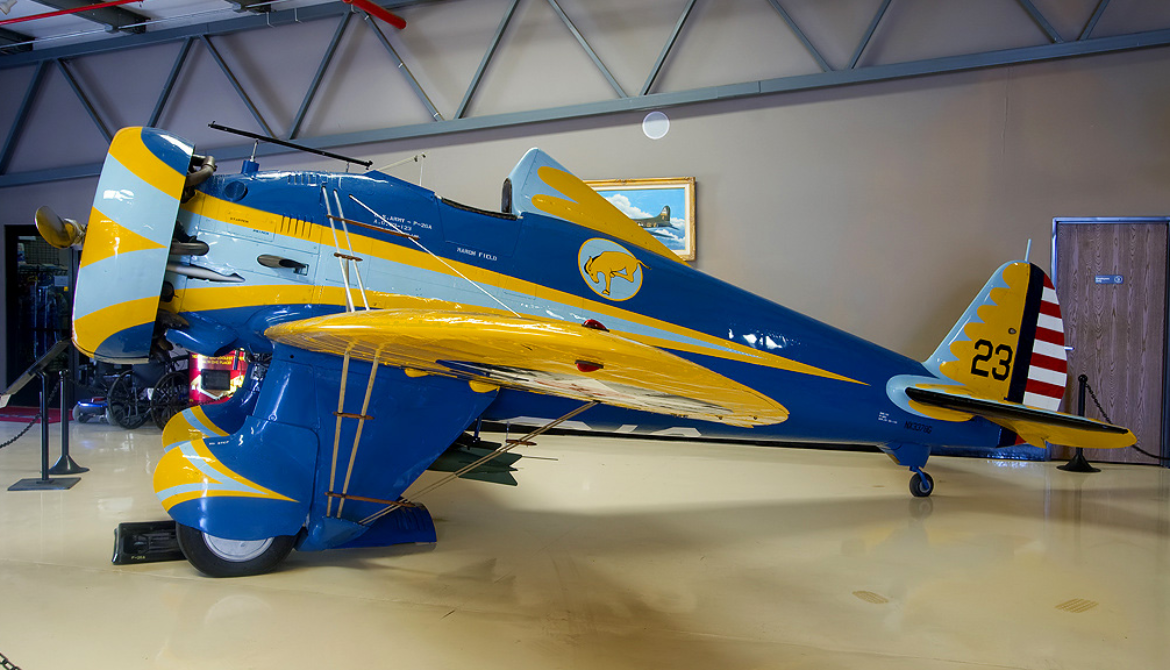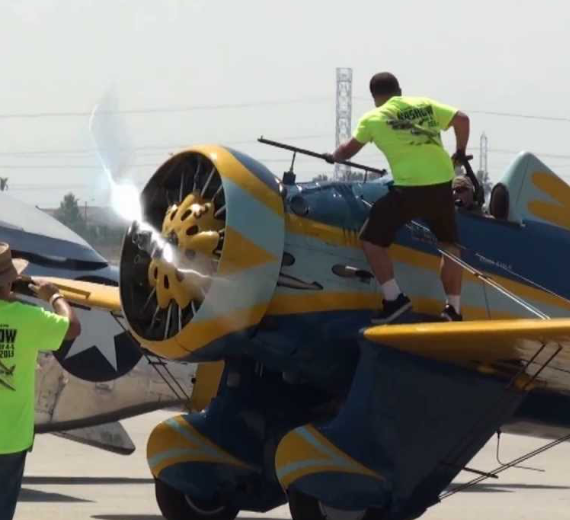Boeing Military
Boeing P-26 Peashooter
Role Fighter
National origin United States
Manufacturer Boeing
First flight 20 March 1932
Retired 1956
Primary users United States Army Air Corps
Republic of China Air Force
Philippine Army Air Corps
Guatemalan Air Force
Number built 151
Variants Boeing P-29/XF7B-1
.
History Boeing Military
Boeing P-26 Peashooter

The Boeing P-26 "Peashooter" was the first American production all-metal fighter aircraft and the first pursuit monoplane to enter squadron service with the United States Army Air Corps. Designed and built by Boeing, the prototype first flew in 1932, and the type was still in use with the U.S. Army Air Corps as late as 1941 in the Philippines. There are two surviving Peashooters, but there are three reproductions on display with two more under construction.
The project funded by Boeing to produce the Boeing Model 248 began in September 1931, with the US Army Air Corps supplying the engines and the instruments. The open cockpit, fixed landing gear, externally braced wing design was the last such design procured by the USAAC as a fighter. The Model 248 had a high landing speed, which caused a number of accidents. To remedy this, flaps were fitted to reduce the landing speed. The Army Air Corps ordered three prototypes, designated XP-936, which first flew on 20 March 1932. The Boeing XP-936's headrest offered little protection should it flip onto its back, risking injuring the pilot. As a result, production Model 266s (P-26As) had a taller headrest installed to provide protection.
The "Peashooter", as it was known by service pilots, was faster than previous American combat aircraft. Nonetheless, rapid progress in aviation led to it quickly becoming an anachronism, with wire-braced wings, fixed landing gear and an open cockpit. The cantilever-wing Dewoitine D.500 flew the same year as the P-26 and two years afterwards the Soviet I-16 was flying with retractable landing gear. By 1935, just three years after the P-26, the Curtiss P-36, Messerschmitt Bf 109 and Hawker Hurricane were all flying with enclosed cockpits, retractable landing gear and cantilever wings. However, some P-26s remained in service until after the United States entered World War II in December 1941.0
KmCeiling
0
KmRange
0
Km/HAircraft Speed
0
Max Crew
Photo Gallery
Boeing P-26 Peashooter


Boeing Military Airplanes
Boeing P-26 Peashooter
General characteristics
- Crew: One
- Length: 23 ft 7 in (7.19 m)
- Wingspan: 28 ft (8.5 m)
- Height: 10 ft (3.0 m)
- Wing area: 250 sq ft (23 m2)
Powerplant
- Empty weight: 2,196 lb (996 kg)
- Gross weight: 3,360 lb (1,524 kg)
- Powerplant: 1 × Pratt & Whitney R-1340-27 Wasp 9-cylinder air-cooled radial piston engine, 600 hp (450 kW)
- Propellers: 2-bladed fixed-pitch propeller
Specifications
- Maximum speed: (377 km/h,
- Combat range: 360 mi (580 km,
- Ferry range: 635 mi (1,022 km,
- Service ceiling: (8,400 m)
- Rate of climb: 719 ft/min (3.65 m/s)
Armament
- Guns: 2 × .30 in (7.62 mm) M1919 Browning machine guns or 1 x .30 in (7.62 mm) and 1 x .50 in (12.7 mm) machine guns
- Bombs: 2 × 100 lb (45 kg) GP bombs or 5 x 31 lb (14 kg) anti-personnel bombs[
-
Boeing P-26 Peashooter
Links to Youtube & Others
The "Peashooter", as it was known by service pilots,[Note 1] was faster than previous American combat aircraft. Nonetheless, rapid progress in aviation led to it quickly becoming an anachronism, with wire-braced wings.
Boeing
P-26 Peashooter
Deliveries to USAAC pursuit squadrons began in December 1933 with the last production P-26C aircraft coming off the assembly line in 1936.
Youtube Link
The Spanish Republican Air Force operated a single Model 281 during the Spanish Civil War of 1936–1939, but no kills were made with it before it was shot down on October 21, 1936.













